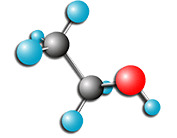INIA-Neuroimmune
The original consortium, INIA-West, was funded in September 2001. Substantial progress in the development of animal models of excessive alcohol consumption led to a major change in the subgroups and cores for the first competitive renewal. The functions of the different subgroups were distributed into functional Binge and Dependence constructs. The Animal Models Cores took the charge of providing animals/paradigms to individual INIA-West investigators. The emphasis then shifted from developing animal models (original core grants) to genetic refinements of existing animal models with selective breeding. The success with animal models and the issue of overlapping use of animal models led to discussions regarding a functional reorganization of INIA-West with the Steering Committee, all INIA-West investigators, and the Scientific Advisory Board.
What evolved was a focus on excessive alcohol consumption that has convergent validity with human alcoholism. The Binge and Dependence constructs have heuristic value and provided a practical means for INIA-West investigators to interact at the molecular, cellular, and systems levels of analysis and utilize animal models of excessive drinking. In the domain of identifying targets for excessive alcohol consumption, INIA-West completed numerous gene array studies on genetic animal models and moved to gene array studies in models of excessive drinking. Gene array pathways novel to the alcohol field in the excessive drinking domain were identified and the focus became establishing a causal role for these protein targets and potential targets for medication development. These two goals proceeded in parallel. Several mechanistic studies identified targets where small molecules could be tested in the Target Assessment Cores.
Today, our highly collaborative research consortium studies immune and inflammatory pathways in the brain, combining novel genomic and systems-level analyses to identify potential treatments for alcohol use disorder. The closely integrated approach using multiple levels of evaluation, from computational to behavioral, will provide key information about genes and biological pathways that contribute to excessive drinking and will identify candidate drug argets for developing new treatments.


